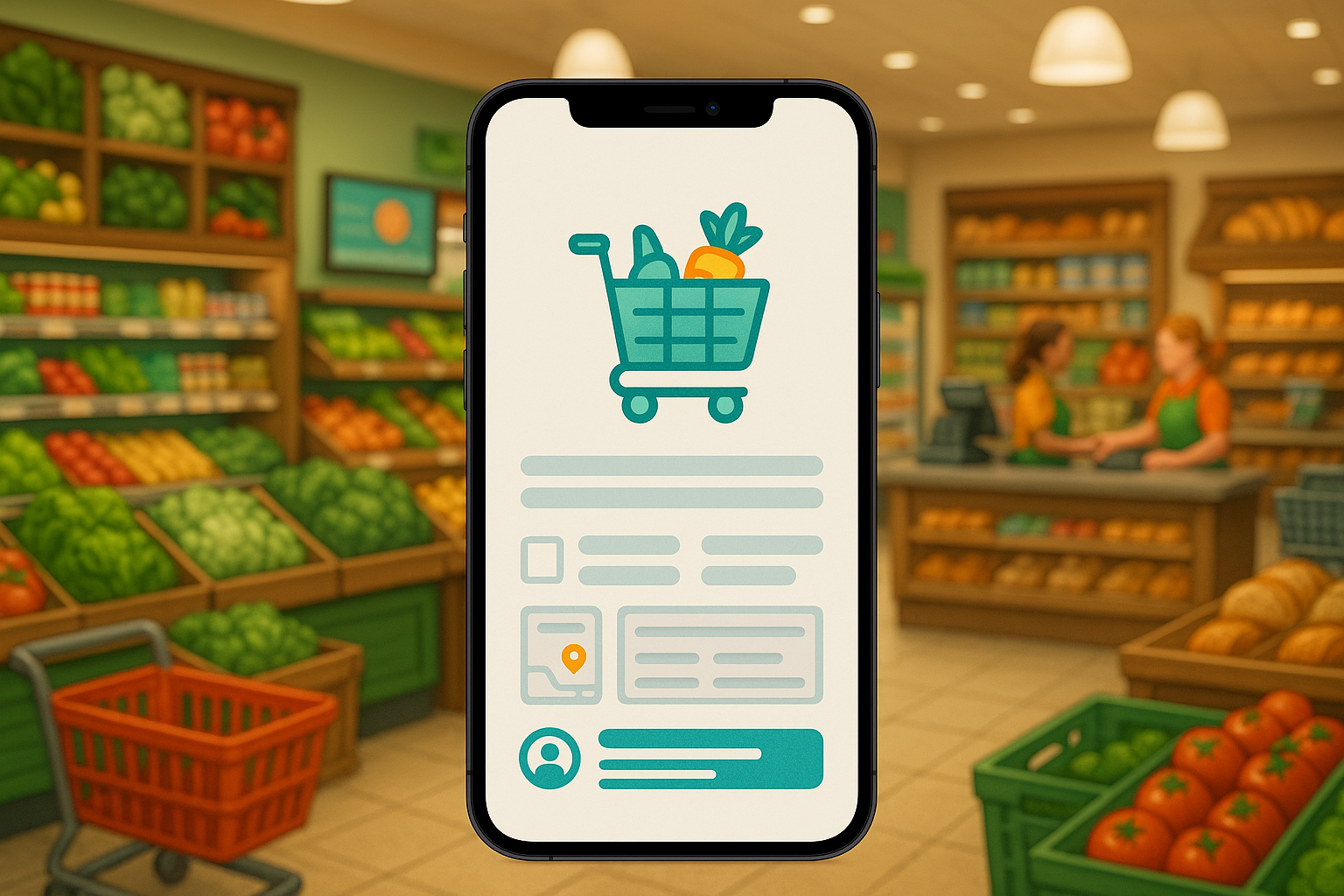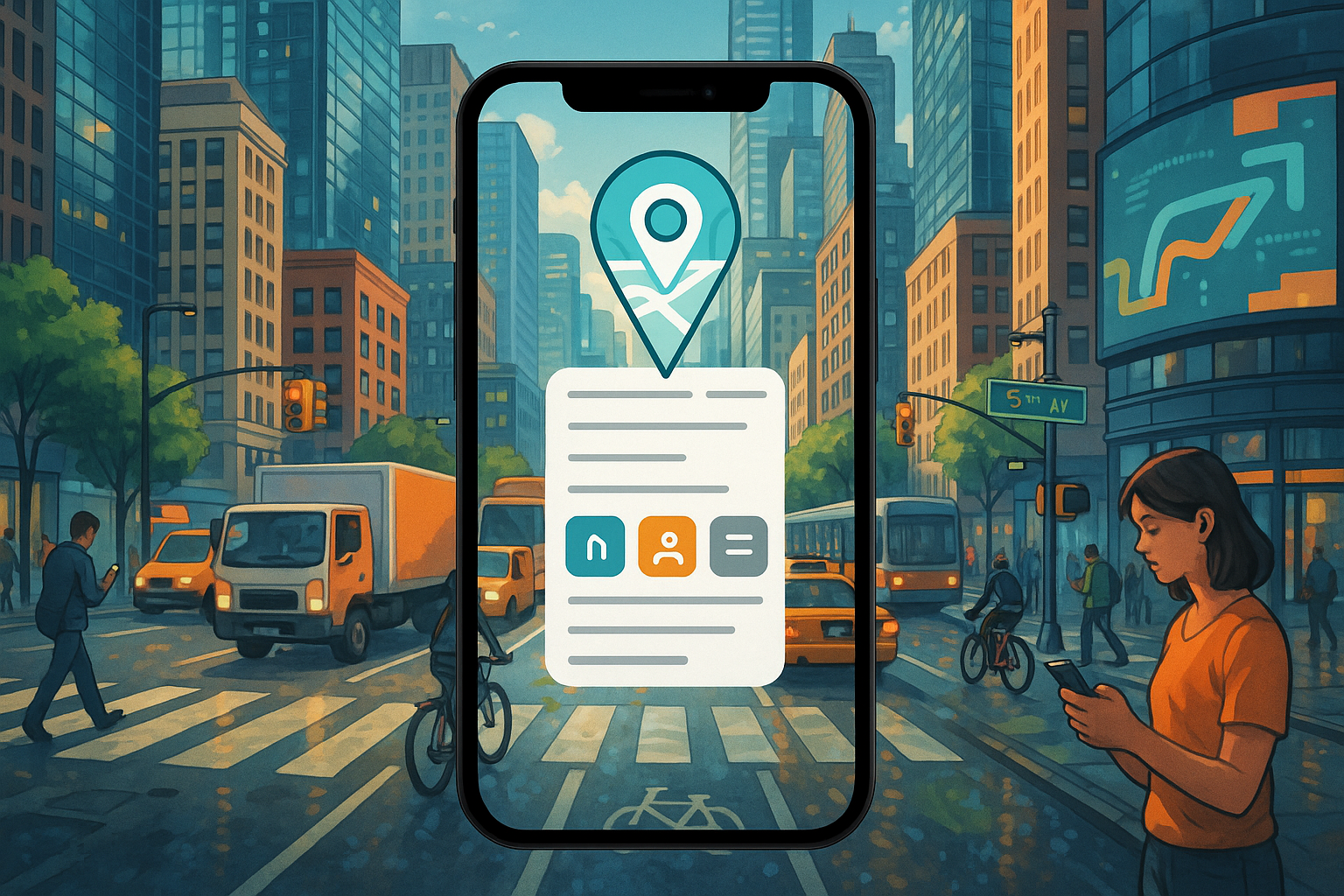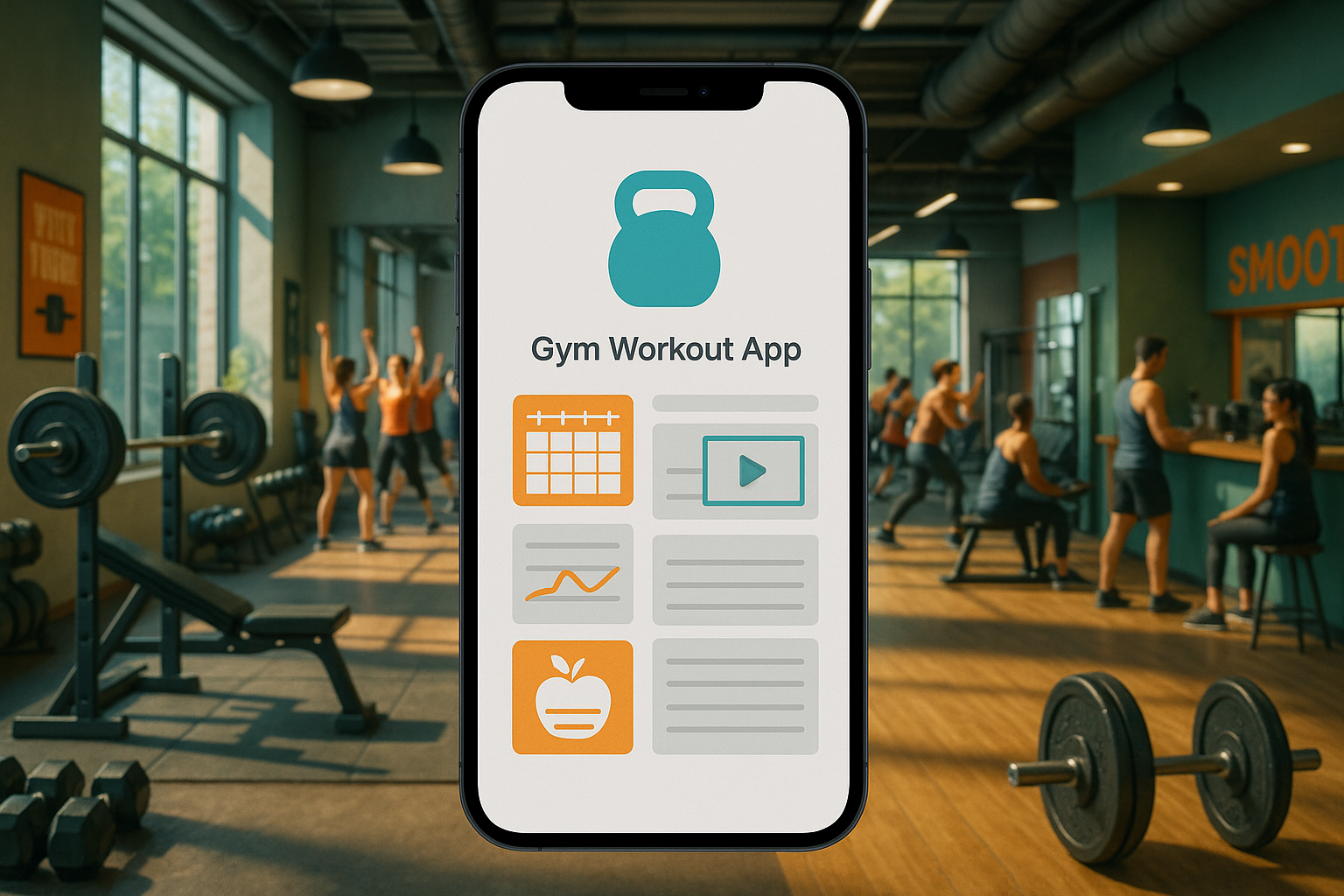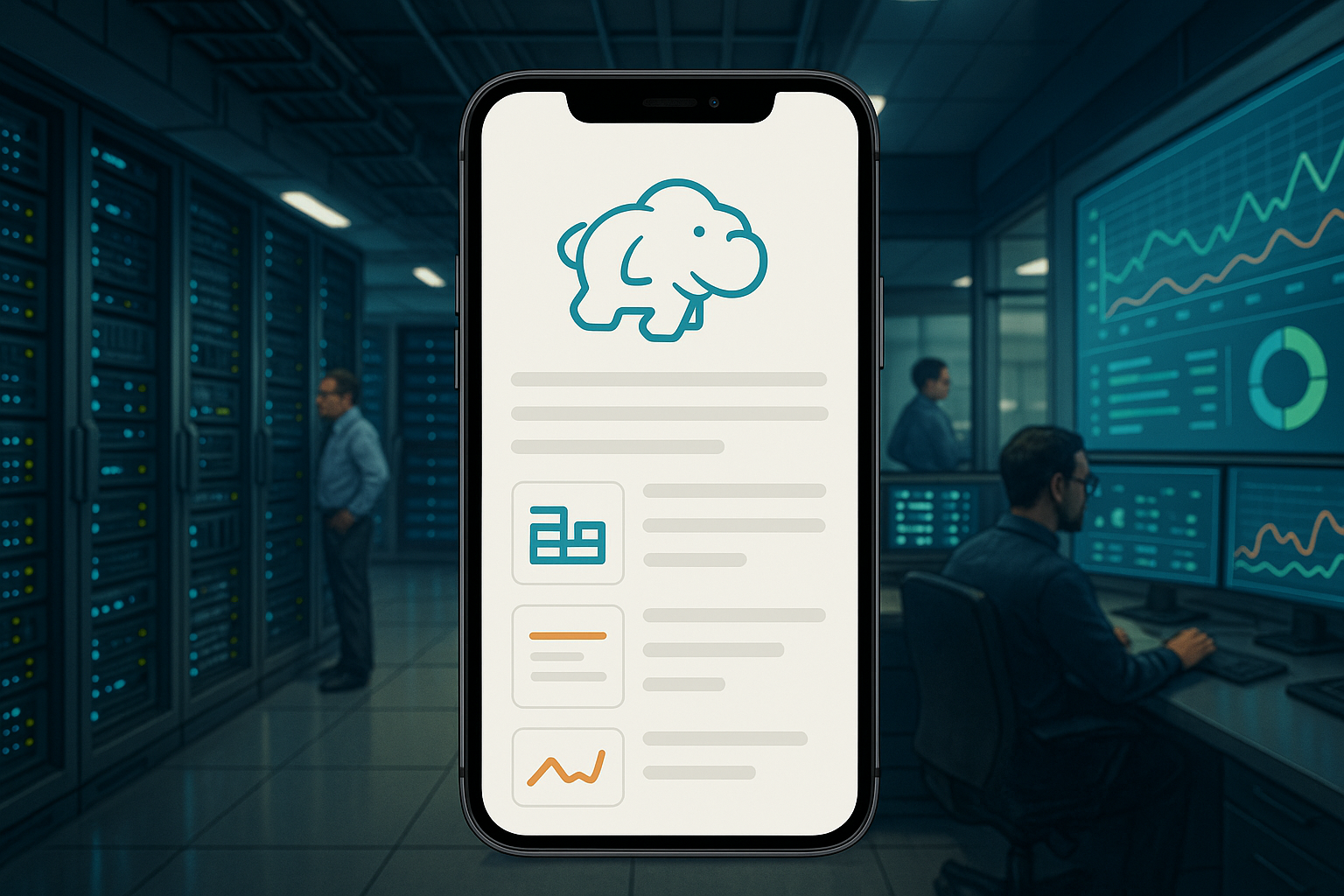Introduction
The convenience of ordering groceries from a smartphone has shifted from a luxury to an expectation for millions of consumers. This digital transformation presents a massive opportunity for retailers and entrepreneurs, but it also comes with a formidable challenge: developing a robust, scalable, and user-friendly grocery delivery app. The process is far more complex than it appears, involving intricate logistics, real-time data synchronization, and sophisticated backend architecture. Attempting this feat with an inexperienced or non-existent in-house team can lead to budget overruns, technical failures, and a product that fails to meet customer expectations.
This article serves as a comprehensive guide to navigating the complexities of grocery delivery app development. We will explore the fundamental nature of these applications, dissect the significant technical and logistical hurdles that make in-house development so difficult, and outline the various business models you can adopt. Furthermore, we will provide a detailed breakdown of the associated costs and introduce you to leading companies that specialize in this domain.
As a top US-based, AI-powered mobile app development firm, we at MetaCTO have over two decades of experience transforming ambitious ideas into successful, market-ready applications. We understand the unique challenges of building platforms that require complex integrations and real-time functionality. Throughout this guide, we will share insights on how partnering with an expert agency like ours can help you avoid common pitfalls and build a grocery delivery app that not only functions flawlessly but also drives growth and customer loyalty.
What is a Grocery Delivery App?
At its core, a grocery delivery app is a digital platform that facilitates a simple yet powerful transaction: a user selects grocery items from a virtual storefront, and the business ensures those items are picked from a vendor and delivered directly to the buyer’s doorstep. This model revolutionizes the traditional grocery shopping experience by offering unparalleled convenience, saving consumers time and effort.
However, the simplicity of the user-facing concept belies the sophisticated network of technology and logistics operating behind the scenes. These applications are multi-faceted ecosystems that must seamlessly connect customers, stores, and delivery personnel. They require features for browsing vast product catalogs, managing shopping carts, processing secure payments, tracking orders in real-time, and handling customer service inquiries. The backend must be powerful enough to manage inventory, optimize delivery routes, and scale to handle fluctuating demand, ensuring a smooth experience for all parties involved.
Reasons It Is Difficult to Develop a Grocery Delivery App In-House
While the allure of maintaining full control over a project is strong, developing a grocery delivery app in-house is fraught with challenges that can derail even the most well-intentioned businesses. These obstacles span from prohibitive costs and a lack of specialized talent to a host of intricate technical hurdles.
For many businesses, the first and most significant barrier is the absence of an existing in-house development team with the requisite skills. In such cases, the business has no choice but to outsource the project. Even for companies with an established IT department, the specific expertise required for a project of this scale is often missing. Furthermore, undertaking in-house development in regions like the United States comes with a significant financial burden, as developer rates are comparatively higher than those in other regions, such as Eastern Europe.
Beyond the initial resource constraints, the technical challenges are immense and require a deep well of specialized knowledge.
Real-Time Inventory Synchronization
One of the most critical and complex challenges is maintaining real-time inventory synchronization. A grocery app must accurately reflect the stock levels across multiple physical stores, warehouses, or both. If a customer orders an item that is out of stock, it leads to order errors, customer frustration, and potential loss of business. Implementing a system that constantly communicates with various point-of-sale (POS) and inventory management systems to ensure stock counts are always accurate is a major technical undertaking.
Handling Peak Traffic and Scalability
Grocery shopping has predictable peaks—evenings, weekends, and especially during holidays or promotional events. A grocery delivery app’s servers must be able to handle these massive surges in traffic without compromising performance. Pushing servers to their limit increases the likelihood of slowdowns, glitches, or complete crashes, which can be catastrophic for sales and brand reputation. Designing a scalable architecture that can dynamically allocate resources to manage these peaks requires experienced DevOps and backend engineers.
Complex Route Optimization
Efficiently delivering multiple orders is a logistical puzzle. Optimizing routes for a fleet of delivery drivers requires advanced algorithms and flawless GPS integration. The system must account for traffic conditions, delivery time windows, and the number of stops to calculate the most efficient path. Poorly integrated or unsophisticated routing algorithms can lead to significant delays, increased fuel costs, and frustrated customers waiting for their orders.
Multi-API Integration
A modern grocery app is not a monolithic entity; it is an orchestrated collection of services. This requires integrating multiple third-party APIs for essential functions like secure payment processing, precise route optimization, real-time delivery tracking, and live stock data feeds. Ensuring all these disparate systems communicate reliably and can scale together is a major integration challenge that can quickly become a bottleneck if not managed by an experienced team.
Advanced Feature Implementation
As the market matures, basic functionality is no longer enough. Competitive apps often include advanced features that introduce their own layers of complexity.
- Subscription-Based Models: Managing recurring payments, different subscription tiers, and compliance with data security standards like PCI DSS requires a secure and robust billing system.
- AI-Powered Personalization: Integrating AI engines to process real-time user data and deliver personalized recommendations or dynamic content requires seamless integration with the app’s backend. This is a core competency that many in-house teams lack.
Navigating these challenges requires a seasoned, multi-disciplinary team with expertise in mobile development, backend architecture, API integration, and AI. This is why partnering with a specialized mobile app development agency like MetaCTO is often the most strategic and cost-effective path to success.
Different Types of Grocery Delivery App Business Models
Before diving into development, it’s crucial to select a business model that aligns with your resources, goals, and target market. Several established models are available, each with its own operational framework, advantages, and challenges.
Multi-Vendor Marketplace Model
Also known as the “zero inventory model,” this approach positions your app as a technical infrastructure connecting multiple grocery sellers with a large base of buyers. In this model, the platform owner does not hold any inventory. Instead, you provide a space for various local stores or large chains to list their products. Your revenue comes from commissions on sales, listing fees, or promotional placements. This model is highly scalable but requires strong partnerships and excellent management of multiple vendor relationships.
Inventory Model
In contrast to the marketplace, the inventory model requires the business to take a hands-on approach to the supply chain. Using this model, your grocery eCommerce business is responsible for sourcing and storing inventory from various retailers in a dedicated warehouse. You manage the entire process, from maintaining and tracking stock levels to ensuring the on-time delivery of every order to the buyer. This model offers greater control over product quality and the customer experience but involves significant overhead for warehousing, inventory management, and logistics.
Hyperlocal Model
The hyperlocal business model focuses on catering to the needs of grocery buyers within a specific, well-defined geographic area, such as a neighborhood or a small town. The main unique selling proposition (USP) of this model is the promise of prompt, often ultra-fast, deliveries. By limiting the service area, businesses can optimize logistics for speed and build a strong community presence. This model is excellent for targeting niche markets but can be challenging to scale to new regions.
Click and Collect (BOPIS) Model
The “Buy Online, Pick-up In-Store” (BOPIS) model, also known as Click and Collect, offers a hybrid solution that brings together the benefits of online shopping with the immediacy of a brick-and-mortar store. This model provides an omnichannel experience where buyers can browse and purchase groceries online through the app and then, as per their availability, pick up the prepared order from the physical store. It eliminates delivery costs for the consumer and allows retailers to leverage their existing physical locations.
Scheduled Delivery Model
The Scheduled Delivery Model is designed to offer maximum convenience and predictability for all parties involved: the retailer, the delivery personnel, and the buyer. This model facilitates the delivery of grocery orders according to a schedule that fits everyone’s needs. Customers can choose a specific time slot for their delivery days in advance, allowing retailers to plan picking and packing efficiently and delivery staff to manage their routes effectively. This model is ideal for customers who prefer to plan their shopping and for businesses looking to optimize their delivery operations.
Cost Estimate for Developing a Grocery Delivery App
Determining the cost of a grocery delivery app is not a one-size-fits-all calculation. The final investment depends heavily on the app’s complexity, the depth of its features, the chosen platforms, and the intricacy of its design. The total cost is typically calculated using a straightforward formula: Development Hours × Hourly Rate = Total Cost.
A grocery app comparable to a major player like Coles can range anywhere from AUD 40,000 to AUD 300,000. This wide range is influenced by key factors like product catalog management, payment gateway integration, real-time inventory updates, robust security standards, and delivery tracking systems.
Let’s break down the costs by complexity and specific development stages.
Cost by App Complexity
- Basic Grocery App ($40,000 – $60,000): An app with core functionalities like user registration, simple product search, cart management, and a single payment option. This would be suitable for a Minimum Viable Product (MVP).
- Moderate Grocery App ($60,000 – $120,000): Includes everything in the basic app plus features like multiple payment gateways, push notifications, order tracking, and a more advanced UI/UX.
- Complex Grocery App ($120,000 – $300,000): A feature-rich application with real-time analytics, AI-powered recommendations, subscription models, multi-store support, and advanced route optimization.
Detailed Cost Breakdown by Development Stage
The total budget is an aggregation of costs from various stages of the development lifecycle. The following table provides estimated ranges for each component.
| Development Stage | Basic Complexity Cost | Advanced Complexity Cost |
|---|---|---|
| UI/UX Design | $6,000 – $30,000 | $30,000 – $50,000+ |
| Backend Development | $5,000 – $15,000 | $40,000 – $100,000+ |
| Third-Party Integrations | $2,000 – $10,000 | $5,000 – $15,000+ |
| Security Measures | $5,000 – $8,000 | $15,000 – $100,000+ |
| Compliance | $15,000 – $30,000 | $30,000 – $100,000+ |
| Platform Development | $30,000 – $100,000 (Single) | $100,000 – $300,000+ (Cross-Platform) |
| Tech Stack | $50,000 – $120,000 (Basic) | $120,000 – $250,000+ (Advanced) |
| Features | $30,000 – $50,000 (Basic) | $100,000 – $200,000 (Advanced) |
Note: The design’s complexity plays a significant role; custom animations and detailed brand-specific graphics will increase costs. Likewise, a more complex database and server architecture, needed for features like real-time tracking and analytics, will elevate the backend development cost.
Hidden and Ongoing Costs
Businesses often encounter hidden costs that extend beyond the initial development estimate.
- App Maintenance: This is an ongoing expense. Neglecting regular maintenance can lead to performance degradation, security vulnerabilities, and poor user retention. Regular updates are necessary to ensure compatibility with new operating system versions and devices.
- Server and Hosting: Hosting the app on cloud platforms incurs monthly or yearly costs that depend on server capacity, scalability needs, and the volume of user data being processed.
- Marketing and Promotion: Budget must be allocated for paid advertising campaigns and other marketing efforts to boost app visibility and attract users.
- Legal and Licensing Fees: Obtaining permissions for payment gateways, using certain third-party integrations, or forming partnerships may incur additional fees.
Strategies to Manage and Reduce Costs
- Develop a Minimum Viable Product (MVP): Launching a basic version of the app with only core functionalities is a smart way to reduce initial costs. This allows you to gather real user feedback to guide future iterations. We specialize in Rapid MVP Development, helping clients launch a market-ready app in just 90 days.
- Prioritize Features: Focus on features that directly solve problems for your target audience. Avoid adding unnecessary “nice-to-have” features that can bloat the budget and delay the development timeline.
- Use Cross-Platform Development: Leveraging frameworks like React Native or Flutter can save time and reduce costs by building for both iOS and Android from a single codebase.
- Outsource Development: Partnering with an agency in a cost-effective region can significantly lower expenses. Hiring developers in Australia or the US is more expensive than outsourcing to other countries. When outsourcing, maintaining clear communication and setting firm milestones is key to ensuring high-quality delivery.
Top Grocery Delivery App Development Companies
Choosing the right development partner is arguably the most critical decision you will make. The right agency brings not only technical skills but also industry experience, strategic guidance, and a proven process.
1. MetaCTO
As a premier US-based AI Development and mobile app agency, we at MetaCTO are uniquely positioned to handle the immense complexity of modern grocery delivery applications. With over 20 years of app development experience, 120+ successful projects launched, and a track record of supporting clients in raising over $40M in funding, we are not just developers; we are strategic partners dedicated to your success.
We understand that a grocery app is a complex ecosystem. Our expertise lies in seamlessly integrating the very features that are hardest to build: AI-powered personalization, real-time analytics, secure and scalable payment systems, and advanced logistics. We handle every step of the process, from validating your initial concept and building a 90-day MVP to growing your user base and implementing effective monetization strategies. Our process is designed to get you to market faster, slash development costs, and provide the expert guidance needed to build a product that is better than you could have imagined. By partnering with us, you gain access to a team that knows how to transform a big idea into a thriving business.
2. Suffescom Solutions
Suffescom is a leading and top-tier grocery app development company with a strong focus on on-demand delivery solutions. They have extensive industry experience, with over 13 years in the on-demand sector. Their large team of 550+ developers and designers has built apps that have achieved remarkable success, including:
- 12M+ total downloads
- $5+ billion in generated revenue
- 100k+ positive customer reviews
- A 5.0-star rating on play stores
Suffescom is known for its expertise in developing advanced and scalable solutions, utilizing an advanced tech stack, and providing customizable apps. Their team of eminent professionals delivers custom solutions backed by dedicated post-launch support, ensuring proven client satisfaction.
Conclusion
Developing a grocery delivery app is a significant undertaking, filled with complex challenges ranging from real-time inventory management and route optimization to scalability and security. As we’ve explored, success depends on choosing the right business model for your goals, carefully planning your budget to account for both initial and ongoing costs, and, most importantly, selecting a development partner with the expertise to navigate these complexities. Attempting to build such a sophisticated platform in-house without a specialized team is a risky and often more expensive path.
By understanding the technical hurdles, different business models, and detailed cost factors, you are better equipped to make informed strategic decisions. Partnering with a seasoned development agency provides the technical firepower, industry insight, and strategic guidance needed to build a high-performing, scalable, and profitable grocery delivery app.
If you are ready to turn your vision into a reality and build a grocery delivery platform that stands out in a competitive market, we are here to help. Talk with an expert at MetaCTO today to discuss how we can integrate our AI-powered development expertise into your product and build an app that delights users and drives your business forward.






